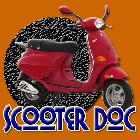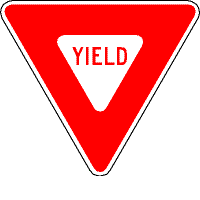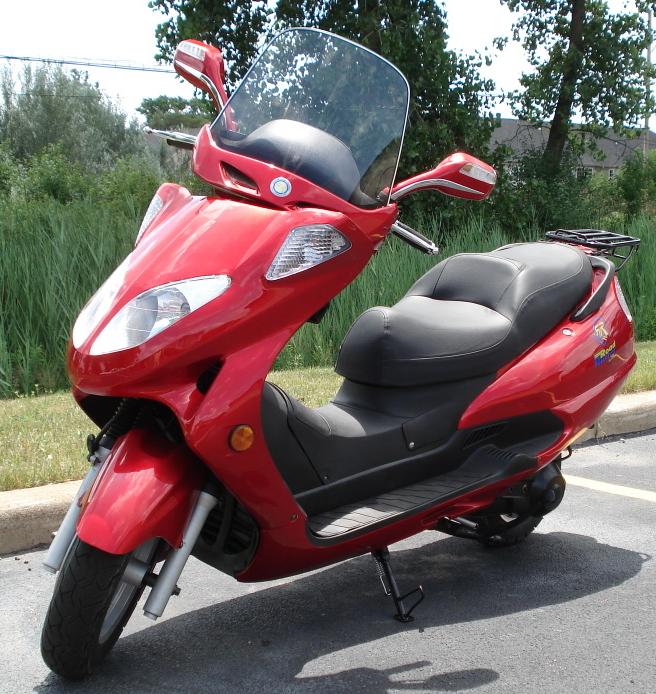Fuel Efficient Driving
Site Map
What's New
Features
Scooters from Amazon.comYes Man, Scooters in Film
Larry Crowne and scootering
Helmet Free scootering
Scooters in a failing economy
Scooter Economy
Scooter ROI Analysis
Scooter pays for itself
Types of Motorscooters
Why ride a scooter?
Motorscooter FAQ
Buying Scooters Online
Join Our Mailing List
Recommend this site
Scooter Inspiration
Scooter EconomyMotorscooter Advantages
Motorscooter Disadvantages
Motorscooter Books
Motor Scooter Poetry
Business Scooter Travel
Motorscooter Posters
Motorscooters in California
Scooting in the UK
Green Scooting in China
Scooting in Italy
Motorscooters in Iraq
Motor Scooter History
The Ice-Cream Scooter
Pets and Motorscooters
RVs and Motorscooters
Gas vs. Electric Scooters?
Put-putting Pleasures
Recommended Scooters
Scooter Culture
Larry Crowne (film)
Dating and Scooter Culture
Motorscooter Freedom
Motor Scooter Image
Scooter Lib
Back to School on a scooter
Motor Scooter Music
Motorscooter Camping
Types of Motorscooters
Classic Motor ScootersItalian Motor Scooters
The Vespa Motorscooter
The Aprilia Motorscooter
Falcon Electric Scooters
50cc Motorscooters
Kymco Motorscooters
GT Chaunl Scooters
Chinese Motor Scooters
TANK Motorscooters
The RoadRunner Scooter
Roketa Motorscooters
The I-scooter
Moped Scooters
Mopeds
Scooter Choices
Best Scooter DealsThe Performance Scooter
The Luxury Scooter
The Minimalist Scooter
The Classic Scooter
The Basic Scooter
The I-scooter
The Electric Scooter
Stand-up Scooters
The Mobility Scooter
Used Motorscooters
California Legal Scooters
Toy Scooters
Practical matters
Trouble starting a scooterScooters and the Environment
Scooter Return On Investment Analysis
Motor Scooter Repair
The Scooter Commute
Scooter Repair Shops
Scooter Replacement Parts
Vespa Repair
Scheduled Maintenance
Fuel Efficient Driving
Essential Scooterist Kit
Passengers on a Scooter
Motor Scooter parking
Using the Kick Starter
Motor Scooter Batteries
Motor Scooter Stands
Rotating a Scooter
Cargo Storage Issues
Chinese Scooter Alarms
Scooter Roadside Assistance
Affordable Insurance
Scootering in groups
Motorscooter safety
Motorscooter SafetyDriving a Motorscooter
MSF Manual: Your Scooter
Scooters and Potholes
Important, before you drive
Motorscooter Helmets
All-weather Scootering
The Oily Path of Safety
Motorscooter Journal
Motorscooter JournalOff-highway scooter routes
The Scooterdoc
Scooter Choice Ethics
India Shuns Scooters
Left-handed Motorscooters
Other Types of Scooters
Mobility ScootersScooter-inspired Vehicles
Electric Motorscooters
The Three-wheel Scooter

Vespa Service In
Southern California
Saving Fuel: road lingering is not a sign of dementia.
If choosing what one drives is the mother-load of fuel savings, how one drives it can be the gold flecks in the pan meager perhaps, but consistent. The principle of driving for fuel conservation can be applied in any vehicle, however, and when applied in a gas guzzler, the savings can easily be enough to fuel a smaller vehicle say, a motorscooter.
The key is anticipation
The key is anticipation -- reducing speed in advance of a looming obstacle by judiciously easing off on the throttle rather than sinking fuel into acceleration which will later be thrown away by braking. When approaching a red light, any throttle applied beyond that which is required to reach the signal at the next green light is wasted effort and therefore wasted fuel. Speeding forward only to come to a stop may well consume twice as much fuel as coasting leisurely toward the signal and, without having lost all momentum, resuming speed when it turns green. The same principle applies on the highway when congestion ahead promises to render any further acceleration pointless.
One cannot always be frugal and also considerate
This driving behavior may well irritate other drivers who do not understand that they aren't going to reach their destinations any earlier by racing toward red lights. Unfortunately, cross traffic, left-turners seeking to cross your path, or those wishing to turn right (where right on red is permissible) or left (where a left arrow may appear before the a green light does) do have a legitimate gripe if they are forced to wait as you progress leisurely along. There are times when consideration for others must take precedence over fuel conservation. In most cases however, these factors can also be anticipated and measures taken to avoid causing road rancor. It is the irate driver who has lost his right to wait at a red light (almost certainly the most frequently resentful of this practice) that deserves to be ignored.
Different thinking, same result
There are several ways to think about this process: anticipate by easing off on the throttle, avoid using the brake, or simply avoid, as much as possible, coming to a stop at all. On a scooter one could interpret this principle as: try to put your foot to the ground as seldom as possible.
Road lingering can improve the safety margin
Applying fuel conservation driving principles and thereby largely eliminating sudden stops and starts is also kinder to the vehicle and can substantially reduce wear. It can also be a lot of fun and can go as far as learning the period and sequence of traffic lights along commonly taken routes. Concentrating upon factors in the road ahead is just as essential to safety as to gas savings and thus serves a dual purpose. Most drivers tend to speed along until some obstacle or other prevents further progress, and then upon encountering it, whether it be a vehicle they creep along behind, or a temporary delay that must be waited out, they always find themselves without a clear path ahead. The fuel-efficient driver, on the other hand, often retains leading space ahead, seeing no need to speed towards a stop. This space, together with concentration upon anticipating conditions on the road ahead, also provides a margin of safety.
Smart Traffic Signals Can Be a Boon and a Detriment
While it does make perfect sense for sensor-equipped traffic lights to be used to stop traffic only when cross traffic is present, this feature can nullify the advantages of timing one's approach to an intersection. If the lingering driver is approaching an intersection whose signal requires the presence of traffic before changing, such conservation driving is entirely in vain. If the impending signal-controlled intersection is awaiting your presence before initiating its cycle, one might as well waste both gas and braking energies, as most drivers are wont to do, else the light will stubbornly stay red until you do get there, slowing your progress and that of anyone behind you. It may thus be advisable to determine whether another vehicle is present and has tripped the sensor on sensor controlled intersections before implementing dawdling conservation measures. Signals are not yet sophisticated enough to encourage prudent petrol parsimony.
"Your sitee is good! Cheeras! Hello!!!! This is my first visit.... I found your site to be one of the most interesting websites on the Internet. It is very helpful site. Thank you much for your work.... Cheers!"
One may be regarded as a wassock
Unfortunately, the driver who adheres to these principles is frequently misunderstood and generally disparaged by those who mistake road lingering and velocity circumspection for dementia. General study and recognition of the value of the practice is indicated.
Stop Signs: The Scourge of Fuel-Efficient Driving in the US
One roadblock to fuel-efficient driving that Americans suffer from is stop signs. Every time the vehicle is brought to a complete stop, losing all intertia, and then requires reaccellerating, a great deal of fuel is wasted. When stopping is enforced whether or not any other vehicles are present, this waste is unconscionable. Added fuel consumption also increases air pollution. 5,000 vehicles forced to stop per day can generate 15 tons of pollutants per year. (See: San Jose Department of Transportation: Traffic Sign and Marking). It has also been estimated that as much as 5% fuel savings can be achieved through the use of regenerative systems that would save the energy wasted stopping (see Green Car Congress: Volvo Adding Seven New DRIVe Models; Start/Stop, Regenerative Charging on Three).
Much of the world (and a few parts of the US) have discovered that roundabouts are much more efficient, saving both time and fuel, as the vehicle need not stop if there is no traffic to deal with at the intersection. A few half-hearted attempts to experiment with roundabouts in Southern California have met with failure as Californians (at least) seem unable to figure out how to use them. Studies have revealed clearly the waste involved in current stop sign policies. In one study, replacing a signalized intersection with a roundabout reduced carbon monoxide emissions by 29 percent and nitrous oxide emissions by 21 percent2. In an additional study, replacing traffic signals and stop signs with roundabouts reduced carbon monoxide emissions by 32 percent, nitrous oxide emissions by 34 percent, carbon dioxide emissions by 37 percent, and hydrocarbon emissions by 42 percent3. Likewise, constructing roundabouts in place of traffic signals can reduce fuel consumption by about 30 percent2, 4. At 10 intersections studied in Virginia, this amounted to more than 200,000 gallons of fuel per year. (Road Talk, Vol 13, Issue 3) For more on roundabouts, see The Roundabout Way.

The stop sign is rarely to be seen in much of the world where intersection regulation has frequently been left to the judgement of the driver, though it remains a problem in the U.S. where the assumption is erroneously made that safety depends upon eliminating the right of drivers to exercise their own discretion as to what is and is not a safe speed at which to approach and enter an intersection. In fact, the recent trend in stop sign policy is to place the limit line as much as eight or ten feet before the intersection, thus requiring vehicles to come to a complete stop twice, once at the limit line and then again after reaching the cross street where it is finally possible to see and evaluate the state of cross traffic. Though pedestrian safety is no doubt the putative reason for this policy, one cannot but question whether this continuing erosion of the right of the driver to exercise his or her own discretion may also be occasioned by a desire to support constabulary convenience in perpetuating and expanding the traffic citation revenue stream. In either case, concern for the environment is being ignored while the driver is assumed to be incapable of circumspection and intelligence. Unfortunately, this may in many cases be a valid assumption.
For further information of fuel-efficient driving see
- Act on Co2 Driving your car.
- Green Car Congress: Volvo Adding Seven New DRIVe Models; Start/Stop, Regenerative Charging on Three
- EcoDriving USA
- Stop Signs « Sustainability at Western Technical College
Bookmark this page to:


